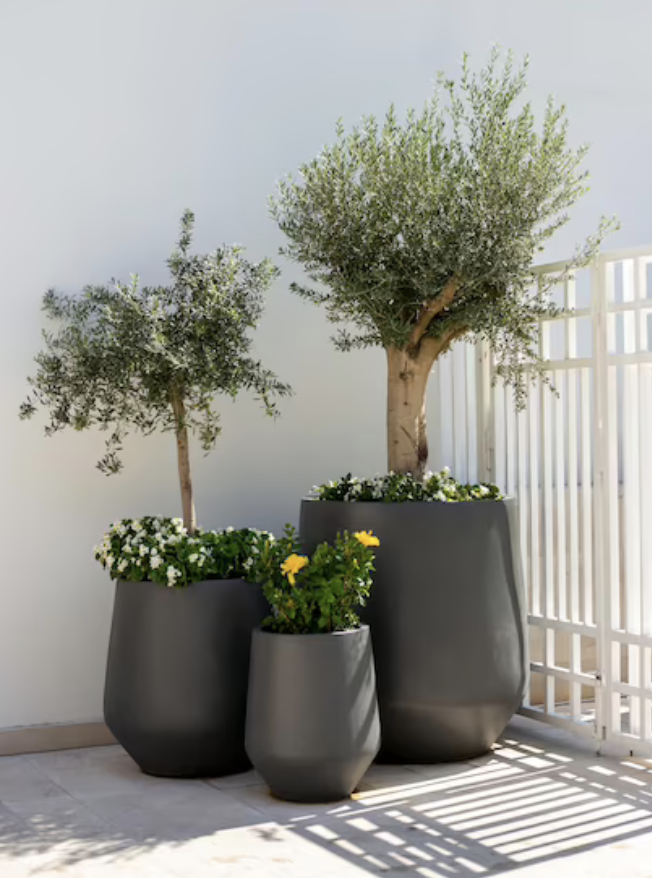Olive trees are among the oldest cultivated trees in the world, valued not only for their delicious fruit but also for their many decorative properties. With their silvery foliage, bony stems and fragrant clusters of white flowers in spring, these exceptional plants are the focal point of a beautiful garden in all seasons.

Location
Choose a sunny, well-drained location for olive trees. They need at least six hours of direct sunlight each day.
Soil preparation
Improve the soil with organic matter, ensuring good drainage. Olive trees prefer slightly alkaline soil with a pH between 6 and 8.
Growing process
Dig a hole slightly larger than the root pot and place the plant so that the graft or graft is above the soil surface. Fill the hole and water thoroughly.
Watering
Olive trees are drought tolerant once planted but need regular watering for the first few years. Water thoroughly, allowing the soil to dry slightly between waterings.
Fertilization
Apply a balanced slow release fertilizer in early spring. Avoid excess nitrogen as this can negatively affect fruit production.
Pruning
Prune olive trees in late winter or early spring to remove dead, damaged, or crossed branches. Maintain an open central structure to promote air circulation and sunlight penetration.
Harvest
Olives ripen in late Autumn or early winter. Harvest them when the color changes from green to purple-black.
Pests
Common problems include olive flies, scaly insects, and fungal diseases. Monitor regularly and use organic pest control methods or consult a professional if necessary.
Frost Protection
Olive trees are susceptible to frost damage, depending on your location you can use frost blankets or wraps during the winter to protect young plants or specimens during the winter

